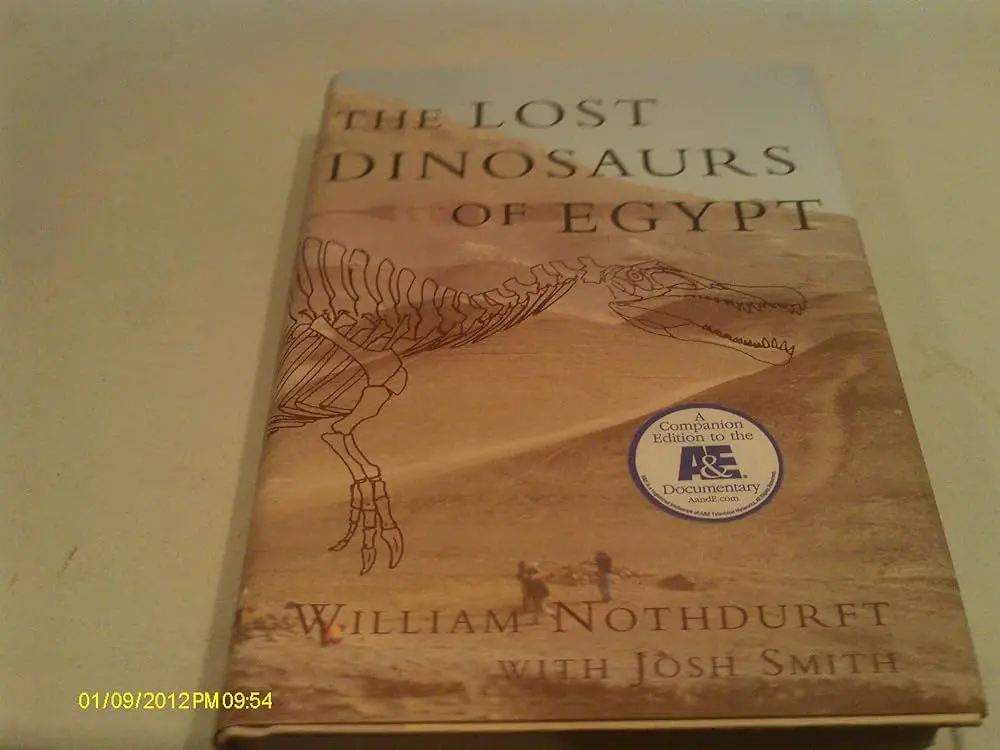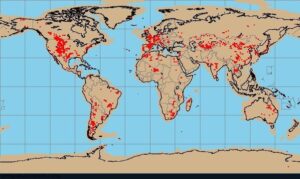Can Dinosaurs Roar? Unearthing the Truth Behind the Myth
Dinosaurs could not roar in the way modern creatures like lions do. Scientists believe they made different sounds instead.
Exploring the captivating realm of dinosaurs brings up intriguing questions about their behavior, including the sounds they made. Current evidence suggests that these prehistoric giants lacked the vocal capabilities necessary for roaring, as seen in today’s big cats. This consensus arises from studying dinosaur fossil evidence, particularly the structure of their skulls and potential voice box remains.
Interest in dinosaur sounds has surged thanks to popular media, yet scientific research continues to debunk myths with facts grounded in paleontology. The mystery of dinosaur communication remains a fascinating topic, inviting enthusiasts and experts alike to piece together clues from the ancient past. Understanding these magnificent creatures draws not only from fossil records but also from comparisons with their closest living relatives, birds and reptiles, offering insights into the possible sounds they produced.

Credit: www.tiktok.com

The Dinosaur Roar: Fact Or Fiction?
Dinosaurs have captivated our imagination for generations. Movies show them as roaring giants. But did they really sound like that? Today’s science gives us new answers to this old question. Let’s explore what we know about dinosaur sounds.
Hollywood’s Portrayal Vs. Paleontological Evidence
In movies, dinosaurs roar mightily. These sounds thrill audiences. But in reality, experts can only guess. They use fossil clues to uncover the truth. No evidence yet proves dinosaurs roared like in Hollywood films.
Analyzing Fossilized Evidence For Vocal Capabilities
Scientists examine fossils to learn about dinosaur sounds. They look at skulls and crests on fossils. Some dinosaurs had features similar to birds. This suggests they could make noises. But roaring like a lion is still uncertain.
- Crests may have helped with sounds.
- Not all dinosaurs could vocalize the same.
- Bird-like dinosaurs likely made bird sounds.
Did dinosaurs communicate? Probably, but we are still learning how. These prehistoric voices remain a mystery.
Vocalizing Giants: How Did Dinosaurs Communicate?
Dinosaurs once roamed the Earth, their massive forms a testament to prehistoric times. They were the giants of the past, commanding the landscape with ease. But beyond their size and strength, how did they interact with one another? One essential aspect of their behavior remains a subject of curiosity and scientific investigation: their communication. Did these vocalizing giants roar through the ancient forests, or did they communicate in a different way? Join us as we uncover the secrets of dinosaur communication.
The Anatomy Of Dinosaur Sound Production
Unraveling the mystery of dinosaur vocalization begins with their anatomy. Scientists study fossils to guess how dinosaurs made sounds. Dinosaurs had unique voice boxes, similar to birds today. This tells us a lot about their possible sounds. The structure of their skulls and potential air sacs also plays a part. These features suggest they could produce loud and varied noises, crucial for long-distance communication and displaying dominance.
Comparative Analysis With Modern-day Bird And Reptile Vocalizations
Modern-day birds and reptiles give us clues about dinosaur calls. Many birds are dinosaurs’ closest living relatives. By studying birds, we learn about dinosaur sounds. For instance, birds use a syrinx to make calls. No reptile has a syrinx. But reptiles use their larynx to make noises. So, dinosaurs might have used a syrinx, a larynx, or both to talk. This includes soft chirps, loud bellows, and complex songs.
Unsolved Mysteries: Limitations In Dinosaur Acoustic Research
The thunderous roar of a T. rex in movies has captivated audiences for decades. Yet, in the realm of science, whether dinosaurs could actually roar remains a tantalizing enigma. The scientific journey to unearth the vocal capabilities of these ancient beasts hits snags due to the fossilization process. Fossils rarely preserve soft tissues like vocal cords. This leaves researchers piecing together clues with the hope of one day solving these prehistoric mysteries.
Challenges In Reconstructing Dinosaur Vocal Organs
Dinosaur vocal organs are soft tissues. They decay fast and are rarely fossilized. Without these parts, scientists face obstacles in understanding how dinosaurs sounded.
- Lack of exact soft tissue fossils makes recreating sounds speculative.
- Assumptions have to be made based on closely related modern animals.
- Scientists compare existing birds and reptiles for possible similarities.
The Role Of Indirect Evidence In Inferring Dinosaur Sounds
Fossil skulls, crests, and nasal passages provide indirect evidence for scientists. They study these hard parts to guess how dinosaurs might have communicated. Computer models and 3D reconstructions offer a glimpse into the possible sounds.
| Indirect Evidence | Role in Sound Reconstruction |
|---|---|
| Skull and Nasal Structures | Offer clues about resonance and sound production capabilities. |
| Crest and Neck Frills | Potential amplification and sound modification features. |
| Comparison with Modern Animals | Common ancestry hints at vocalization potential. |
While these pieces of evidence cannot produce a definitive dinosaur roar, they provide valuable hints. By piecing together the puzzle, we edge closer to understanding the sounds of creatures from millions of years ago.

Credit: www.facebook.com
Beyond The Roar: Other Possible Dinosaur Communication Methods
Hollywood often depicts dinosaurs as roaring giants. But did they roar like in movies? Scientists now think dinosaurs may have used different methods to talk to each other. Let’s dive into the fascinating world of how these prehistoric creatures might have communicated.
<physical and="" as="" coloration="" communicationDinosaurs might have used their bodies to send messages. Physical displays like showing off their spikes or frills could tell a lot! Bright colors on their bodies may have been used just like birds today use feathers to say ‘look at me’!
- Body posture – Standing tall or crouching could send different signals.
- Head crests – A colorful headpiece might have been a way to impress.
- Tail waving – Moving their tails in special ways could show they’re happy or mad.
Possible Role Of Scent And Tactile Signals In Dinosaur Interaction
Dinosaurs might have used smells and touch, just like dogs and cats do. Scent marking could tell other dinosaurs ‘this is my home’. Gentle touches or bumps could have been a way to say hello or show love.
- Scent glands – They might have had special spots on their bodies to make smells.
- Touching – Rubbing heads or backs could have been a friendly sign.
- Nesting – Sharing a nest space could have helped them bond.
Reimagining Prehistoric Soundscapes: Technologies And Techniques
Imagine the roars of dinosaurs, sounds lost in time. Science now unlocks these ancient echoes. Technologies and techniques weave the past’s acoustic tapestry. Let’s delve into the methods bringing prehistoric soundscapes to life.
Advancements In 3d Modeling And Acoustic Simulation
3D modeling breathes life into fossils. Scientists use dinosaur bones to create digital skeletons. They then add muscles and skin. This shapes how sounds could travel through ancient bodies.
- Computed tomography (CT) scans: High-resolution images reveal bone structures.
- Acoustic software: Simulates how sounds resonate in 3D models of dinosaur skulls.
- Audio technologists: Work to refine simulated roars, making them as real as possible.
Researchers pair simulations with present-day animal sounds. They match the closest relatives—birds and reptiles. These comparisons shed light on potential dinosaur calls.
Interdisciplinary Approaches To Deciphering Prehistoric Auditory Ecosystems
Experts from various fields unite. They share knowledge to rebuild prehistoric soundscapes. Paleontologists team up with sound designers and wildlife acousticians.
- Gathering fossil evidence. Clues point to possible vocalization.
- Studying living animals. Their sounds offer templates for ancient species.
- Applying acoustic ecology principles. It examines sound’s role in dinosaur habitats.
Researchers map out a sonic picture of the era. Dinosaur calls interact with the environment. Trees and water sources impact how sounds travel.
All techniques converge to resurrect the sounds that filled prehistoric skies and forests. Knowledge grows with each discovery. We edge closer to hearing the true voice of the Mesozoic Era.

Credit: www.target.com
Impact On Science And Popular Culture
The mystery of whether dinosaurs could roar has fascinated both scientists and moviegoers alike. Recent studies question long-held beliefs about dinosaurs’ vocal abilities. This shake-up has repercussions not just in paleontology but also resonates through popular culture and educational content, inspiring new interpretations and conversations around these prehistoric giants.
Changing Public Perceptions Of Dinosaurs Through Sound
Blockbuster movies often depict dinosaurs with thunderous roars. Yet, science suggests a different story. The ripple effect on public perception is significant. As new research surfaces, pop culture must adapt to reflect these scientific insights.
Movies and books are updating their depictions of dinosaurs. Museum exhibits are following suit, transforming how we experience these ancient creatures through sound installations that mimic possible dinosaur vocalizations.
Educational Opportunities Stemming From Updated Dinosaur Acoustics Research
Hands-on learning experiences are evolving thanks to these acoustics discoveries. Students enjoy updated, interactive exhibits that challenge outdated notions with facts.
- Interactive displays in museums engage visitors with the latest dinosaur sound hypotheses.
- Science kits for kids include accurate dinosaur models and sound modules.
- Teacher resources now incorporate revised dinosaur sounds for curriculum development.
Digital platforms are also quick to integrate new findings. Websites offer immersive audio experiences, and educational apps update their content to deliver a realistic portrayal of dinosaur life.
Frequently Asked Questions For Can Dinosaurs Roar
What Dinosaur Has The Loudest Roar?
The dinosaur with the loudest roar is speculative, as it’s impossible to measure sounds from extinct species. Paleoacoustic research suggests large dinosaurs like Tyrannosaurus rex could have emitted deep, powerful sounds.
How Did T. Rex Actually Sound?
The actual sound of T. rex is unknown, but experts speculate it could have been a deep, resonating rumble based on its size and the natural sound-making capabilities of similar modern animals.
How Did They Make The Dinosaur Roar?
To create the dinosaur roar in ‘Jurassic Park,’ sound designers combined animal sounds. They mixed tigers, alligators, and howler monkeys, adjusting pitch and length for effect. This innovative sound blending achieved the iconic roar.
Did Dinosaurs Actually Roar Reddit?
Scientists cannot confirm if dinosaurs roared, as soft tissues rarely fossilize, making vocalization evidence scarce. Dinosaurs may have used other sounds for communication.
Conclusion
Diving into the prehistoric past has sparked our imagination. The question of whether dinosaurs could roar has been explored from fossil clues to vocal anatomy. Research suggests their sounds were complex, perhaps not roars as we picture them. As paleontology advances, our understanding of these ancient creatures continues to evolve, rewriting the soundtrack of an era long gone.



